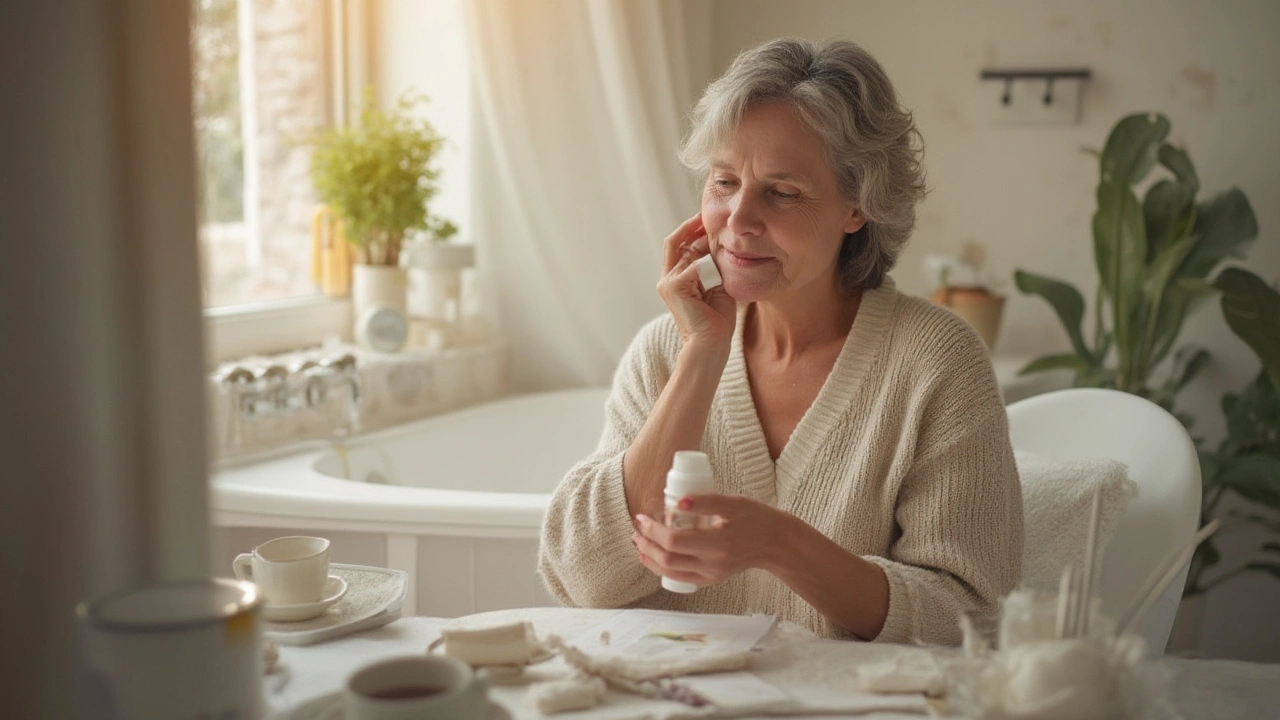Vaginal Dryness: What It Is and How to Ease It
Feeling uncomfortable down there? Vaginal dryness is a common issue that can make sex painful, cause itching, and lead to embarrassing irritation. It isn’t just a problem for older women – anyone can experience it at any age. The good news is that most causes are treatable, and simple changes can bring relief fast.
Common Causes
Hormonal shifts are the biggest driver. When estrogen drops during menopause, breastfeeding, or after certain birth‑control pills, the tissues lose moisture. Stress, anxiety, and poor sleep also mess with hormone balance, making the vagina drier. Certain meds, like antihistamines, antidepressants, and chemotherapy, can have the same effect.
Lifestyle factors matter too. Smoking reduces blood flow, and a diet low in water or healthy fats can leave the lining parched. Even frequent douching or harsh soaps strip natural lubrication, worsening the problem.
Everyday Relief Strategies
Start with water. Drinking at least eight glasses a day helps keep all mucous membranes hydrated. Add foods rich in omega‑3 fatty acids – salmon, walnuts, flaxseed – to support healthy cell membranes.
Switch to gentle, fragrance‑free cleansers. Avoid soaps that leave a residue; plain warm water works fine. After showering, pat the area dry instead of rubbing, and apply a water‑based lubricant if you’re heading into intimacy.
Over‑the‑counter options can be a game‑changer. Look for vaginal moisturizers that contain hyaluronic acid or glycerin. They’re designed for daily use and can keep the tissue supple for days. If you need something stronger for sex, a silicone‑based lube lasts longer and doesn’t dry out quickly.
Don’t forget the power of pelvic floor exercises. Strong muscles improve blood flow, which can boost natural lubrication. Try a simple Kegel routine: tighten the muscles you’d use to stop urinating, hold for five seconds, then release. Do three sets of ten a day.
If you’re on medication that might be causing dryness, talk to your doctor. Sometimes a dose change or a different drug can solve the issue without extra treatments. Hormone therapy, whether pills, patches, or creams, is another option for those with low estrogen, but it should be discussed with a healthcare professional.
When home tricks aren’t enough, schedule a visit. Persistent irritation, bleeding, or pain could signal an infection or another condition that needs medical attention. A quick exam can rule out problems like yeast infections or atrophic vaginitis.
Remember, you’re not alone. Millions of women deal with vaginal dryness, and there are plenty of safe, effective ways to feel comfortable again. Start with small lifestyle tweaks, use a good moisturizer, and keep an eye on any meds that could be the culprit. If things don’t improve, a doctor can guide you to the right treatment.
Learn how to spot and deal with estrogen-related dryness and itching. Clear signs, causes, treatment options, and real tips for everyday life.
